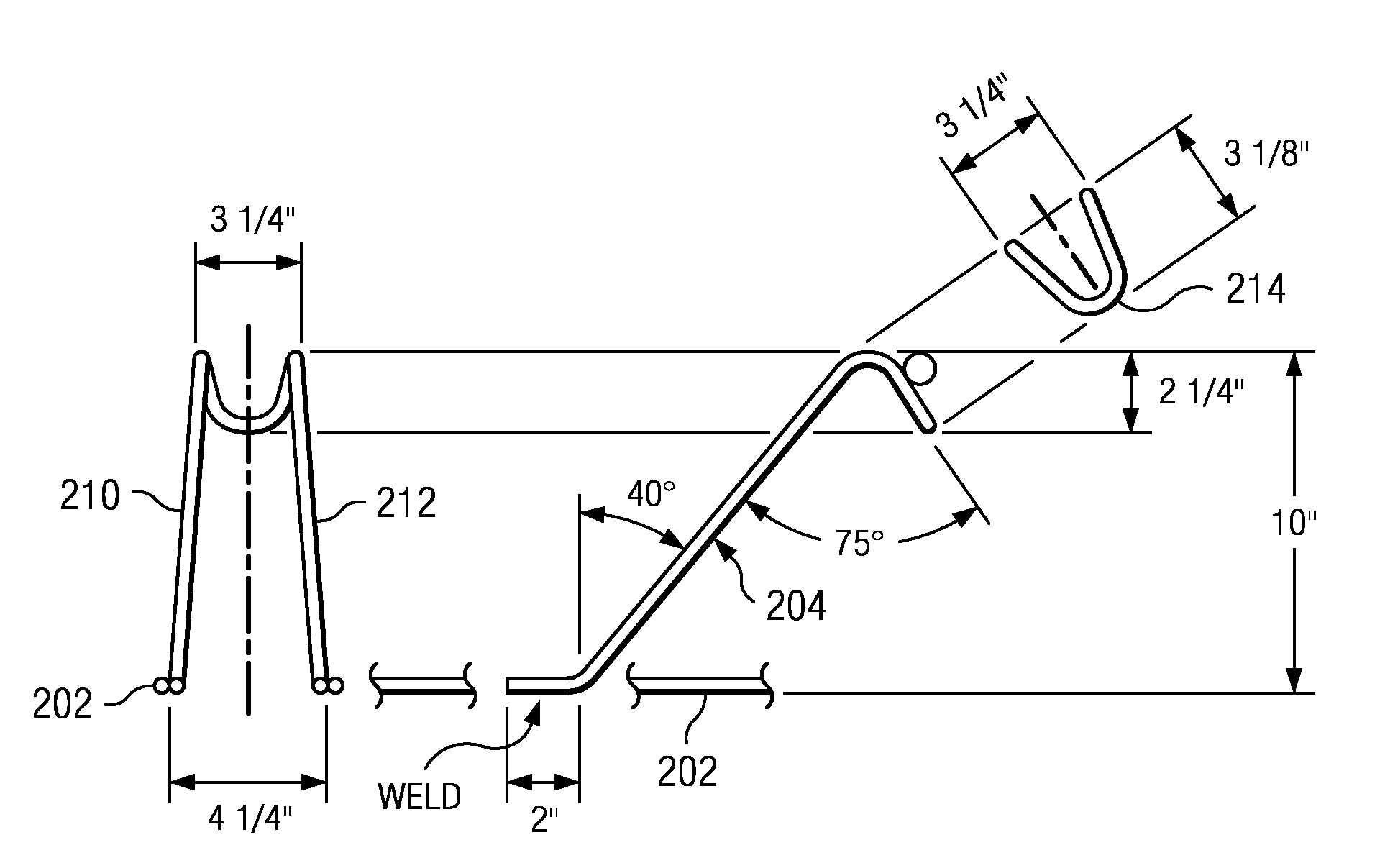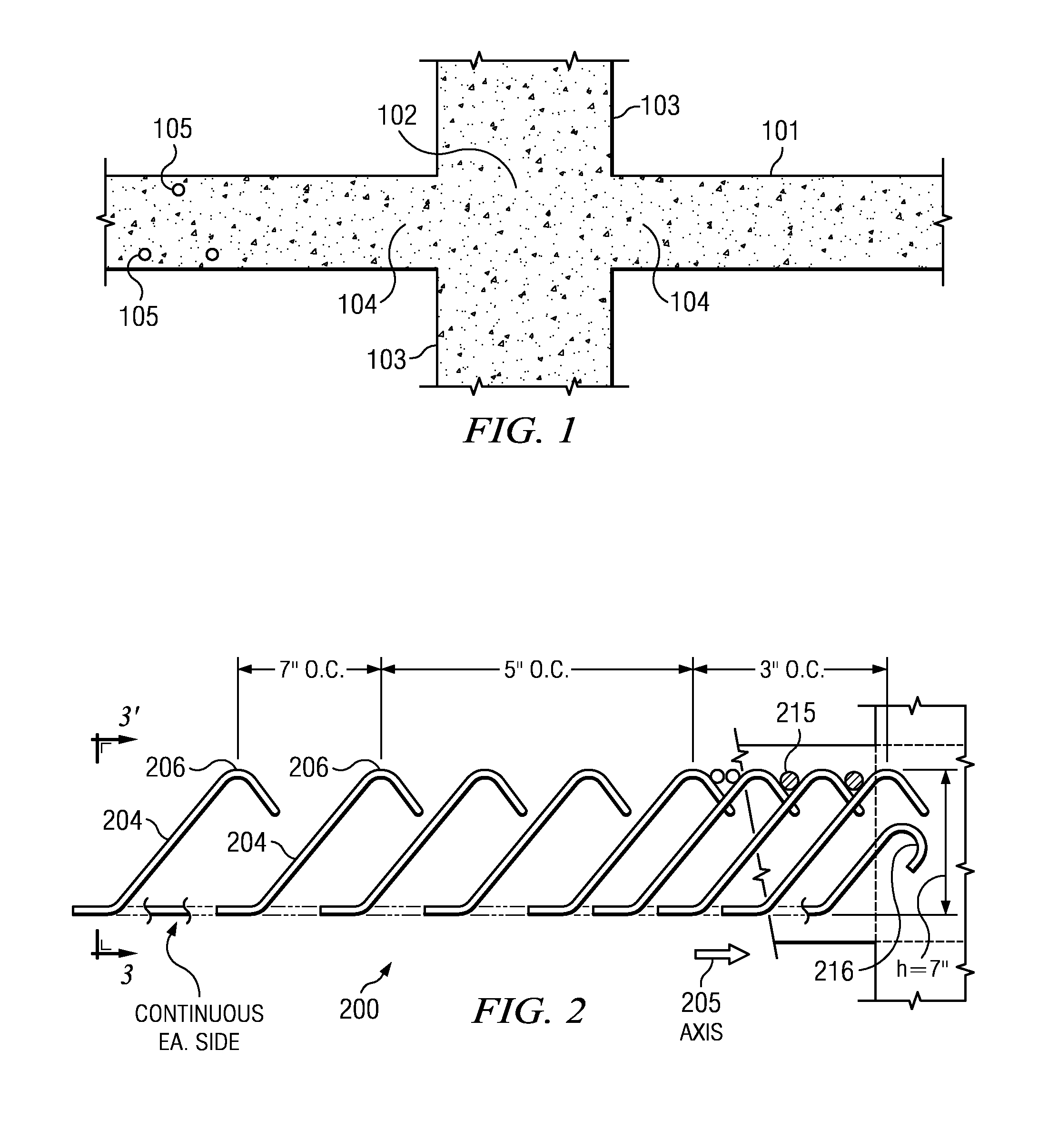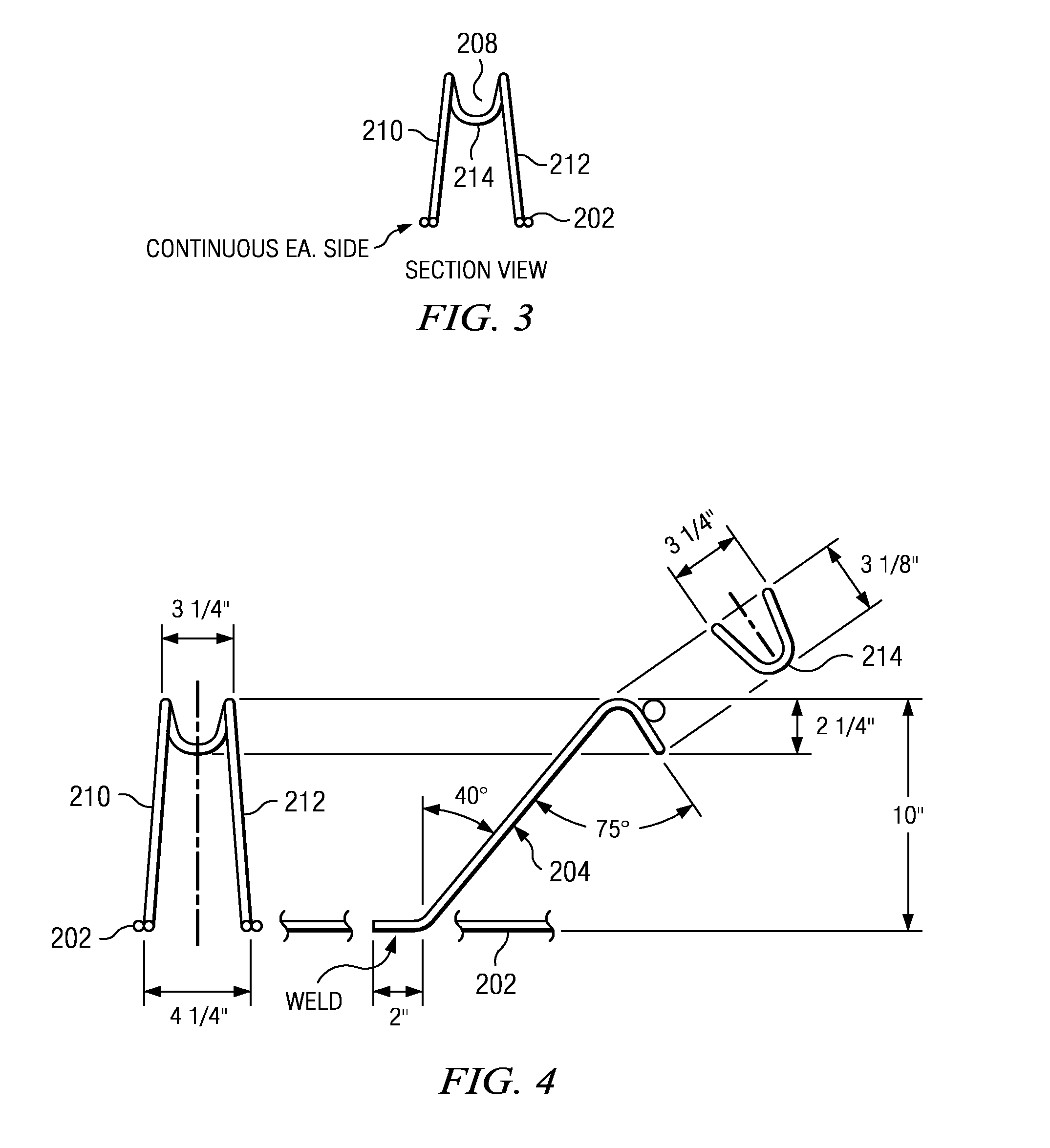Reinforcing assembly, and reinforced concrete structures using such assembly
a technology of reinforcement and assembly, applied in the direction of girders, building repairs, joists, etc., can solve the problems of deficient current state-the-art systems for punching shear reinforcement in slabs, prior art structures providing nothing to reduce or neutralize the horizontal component of diagonal tension, etc., to achieve greater protection of punching shear reinforcemen
- Summary
- Abstract
- Description
- Claims
- Application Information
AI Technical Summary
Benefits of technology
Problems solved by technology
Method used
Image
Examples
Embodiment Construction
[0019]FIG. 1 is a cross-sectional view of a concrete slab structure at an area surrounding the intersection of the slab structure with a supporting column showing undesirable cracking caused by punching shear forces. The column may be a steel supporting column, a concrete supporting column, or the like. In this example, a concrete slab 101 is attached to a support column 103. The concrete slab typically includes internal structural components that provide reinforcement. These include reinforcing bar (or “rebar”), which typically is formed of carbon steel and used in reinforced concrete and masonry structures. In a typical embodiment, rebar 105 extends across the top of the slab (into and out of the view as shown), as well as across the bottom of the slab (although rebar in the bottom is not always used). Reference numeral 102 represents a load or “reaction” area; punching shear failure causes cracks, particular in areas of high stress, such as indicated by reference numerals 104.
[00...
PUM
 Login to View More
Login to View More Abstract
Description
Claims
Application Information
 Login to View More
Login to View More - R&D
- Intellectual Property
- Life Sciences
- Materials
- Tech Scout
- Unparalleled Data Quality
- Higher Quality Content
- 60% Fewer Hallucinations
Browse by: Latest US Patents, China's latest patents, Technical Efficacy Thesaurus, Application Domain, Technology Topic, Popular Technical Reports.
© 2025 PatSnap. All rights reserved.Legal|Privacy policy|Modern Slavery Act Transparency Statement|Sitemap|About US| Contact US: help@patsnap.com



